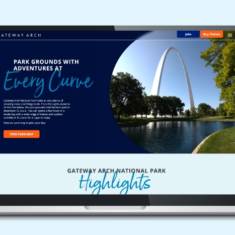Four Truths of Design
04.05.19
It was 1995 and the world was a lot different. We had just opened our doors in a small home office on Delmar Blvd, but we weren’t the firm we are today. Back then, there were few engines to search, no dashboards to configure, no feeds to scroll. And so we opened with a precise focus on one thing: design.
Fast forward to today, and design is a loaded word. Some professionals in our industry say it’s dying, others say it’s in its heyday. And all the while, the businesses who need it most are wondering: what even is design and why do I need it? Today, we’re thinking back to that first office and sharing what we’ve learned about the value of design since then.
Design is encompassing.
In a quote that would become a calling card for designers everywhere, Steve Jobs once told the New York Times Magazine, “Design is not just what it looks like and how it feels. Design is how it works.”
It’s a great quote, and surely one of his best. But what Jobs says just a moment earlier is perhaps even more relevant to how we design today. He’s talking about the iPod and how it transcended entertainment to become a defining icon of the 2000s. We remember it for its polish: the pocket-perfect shape, the cool aluminum finish and the satisfying click wheel. But for Jobs, these were only parts of a whole.
“People think it’s this veneer,” he said. “That the designers are handed this box and told, ‘Make it look good!’ That’s not what we think design is.”
Sure, there is design in the deliverables that go out our doors every day: websites, apps, campaigns. But design in its purest, most impactful form is the critical thinking that informs those deliverables. It may be an abstract concept, but it’s impossible to ignore.
Design is a process.
It’s tempting to view design solely through the lens of its end product. But in doing so, you discount everything that makes the product work. When you focus on the what, you overlook the why and the how.
Those come from a disciplined process, one that’s guided by experience and informed by research. Design is methodical. It tears things apart to see how they fit together. It observes chaos to create order. And it doesn’t take shortcuts.
Design is collaborative.
We grew as designers when we began hiring other talented people. Working alongside writers, developers, analysts and engineers introduces new perspectives. It enables you to reach beyond your old confines and consider something new.
Good designers fear the comfort zone. When you work with only your own knowledge and experience, you risk complacency. Collaboration establishes the checks and balances that everyone needs to do their best work.
Design is a solution.
Done well, design is as unique and nuanced as the challenges it solves. But over the last few years, we’ve seen the unique and nuanced being traded for the good enough and straightforward. These are the commoditized $50 logo services and the build-your-own-website platforms you see almost everywhere.
The problem with the commoditized approach is that the world has more challenges than it has templates. So when you try to force your brand to fit the mold of a template, you’re going to make concessions. That’s not solving a problem–that’s applying a bandage. It’s good in a pinch, but it’s not a long-term answer.
When you think about these four truths, none of them are exclusive to graphic design. And so the term design takes on a new meaning, one that emphasizes thought and process. No matter their discipline, everyone in our agency is encouraged to apply good design principles to think more critically and work more creatively.

